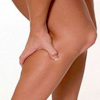Skiing And Snowboarding Injuries.jpg)
The sport of Skiing and Snowboarding requires agility, coordination, balance, strength, and cardiovascular endurance. In addition, due to the blunt force impact associated with skiing and snowboarding, the body must be conditioned to absorb the collisions that occur when performing these sports. Both skiing and snowboarding place a moderate level of stress on the joints of the body, although, the joints that are placed under stress vary between the two. Typical injuries that occur across both skiing and snowboarding include muscle strains and sprains and virtually all joints, especially the lower back, knees, and ankles. In regards to snowboarding, shoulder, elbow, and wrist injuries are must more common. In addition, hand and finger injuries are as well. On the other hand, skiing injuries associated with the knees and ankles are much more prominent when compared to snowboarding. Below is a list of the most common skiing and snowboarding injuries.  ACL/PCL InjuriesAnterior and Posterior Cruciate Ligaments cross each other in an X shape and provide stability to the knee when flexing and extending.  Backaches and StressBackaches may often occur from excess stress originating from the spine, muscles or nerves of the back region. Backaches due to stress may be a precursor to chronic lower back pain, and should therefore be taken seriously.  Back Sprains and StrainsBack Sprains and Strains are extremely common and can in range in severity from a dull pain to a highly acute sharp pain.  Cartilage Injuries and Knee DisordersCartilage Injuries are related to damage and/or loss of cartilage that cause debilitating pain, stiffness and swelling of the knee area.  Clavicle FractureClavicle Fracture injuries are the most common broken bone in the human body and account for about 5% of all fractures that occur.  Colles Wrist FractureColles' Wrist Fractures are a break of the radius bone of the forearm and generally occurs when person uses their hands during a fall.  ConcussionConcussions are due to head trauma in which the brain moves within the skull causing the brain cells all fire at once.  Delayed-Onset Muscle SorenessDelayed-Onset Muscle Soreness is believed to be due to inflammation caused by muscle damage, however, it is not fully understood.  Finger FracturesFinger Fractures typically occur from an acute traumatic impact to one of the finger bones, causing it to fracture.  Frost Bite and HypothermiaFrost Bite and Hypothermia are conditions where the skin tissue freezes causing cell damage or decreases in body temperature.  Herniated DisksHerniated Disks occur when the spinal vertebrae have been compressed and force the disk between the vertebrae outward.  Iliotibial Band SyndromeIliotibial Band Syndrome is related to the iliotibial band becoming irritated and inflamed and causing pain throughout the entire knee area.  Low Back PainLow Back Pain is quite common and can be reduced by maintaining a healthy weight and strong back, oblique, and abdominal muscles.  Meniscus Injuries of the KneeMeniscus Injuries of the Knee are evident by inflammation and pain assocaited with the outside and/or inside of the knee area.  Muscle CrampsMuscle Cramps typically occur within the muscles of the lower portion of the body and are involuntary muscle contractions and spasms.  Muscle Sprains and StrainsMuscle Sprains and Strains are injuries associated with the ligament that connects bone to bone (Sprain) or connects muscle to bone (Strain).  Muscle Strains of the BackMuscle Strains of the Back occur when the muscle fibers of the back are overly stretched and/or torn causing acute pain and soreness.  Neck StrainNeck Sprain injuries are related to overstretching or tearing the neck muscles or the ligaments that connect to the cervical vertebrae.  Osteoarthritis of the KneeOsteoarthritis of the Knee is the degeneration of the cartilage within the knee joint that is located between the femur and tibia bones.  Overtraining SyndromeOvertraining Syndrome occurs in individuals that do not allow their body the necessary time to recover from an aggressive exercise routine.  Patellofemoral Pain SyndromePatellofemoral Pain Syndrome is related to the way the patella tracks and moves along the groove of the femur bone.  Shoulder DislocationShoulder Dislocation injuries occur when the ball of the humerus is dislocated from the socket of the scapula through blunt force trauma.  Shoulder SeparationShoulder Separation injuries involve the stretching or tearing of ligaments at the AC joint, where the clavicle bone connects to the scapula.  Skier’s ThumbSkier’s Thumb is a condition where an injury has occured to the ligament supporting the thumb causing inflammation, pain, and stiffness.  Stress Fracture of the FootStress Fractures can occur when an overload of stress is placed on the foot, resulting in small fractures of the toe or metatarsal bones.  Tendonitis of the WristTendonitis of the Wrist is a result of repetitive overuse causing irritation of the sheath tunnel surrounding the tendons of the thumb.  TenosynovitisTenosynovitis is the inflammation of the synovium fluid filled sheath that surrounds the tendons of the wrist causing pain and swelling.  Torn Rotator CuffTorn Rotator Cuff injuries produce considerable pain in the shoulder joint area when attempting to lift, lower, or rotate the arm.  Trigger FingerTrigger Fingers occur when a tendon in the hand becomes swollen and physically bigger than the tendon sheath surrounding it.  Whip LashWhiplash injuries involve the muscle, ligament, and tendon tissue of the neck and typically occur from an abrupt impact from behind.  Wrist SprainsWrist Strains are the result of an impact that causes the ligaments that connect bone to bone to overstretch and develop minor tears. |
Copyright © 2025 FitnessHealth101.com All Rights Reserved
FITNESS TOPICS
FITNESS REVIEWS
FITNESS & HEALTH GLOSSARIES

